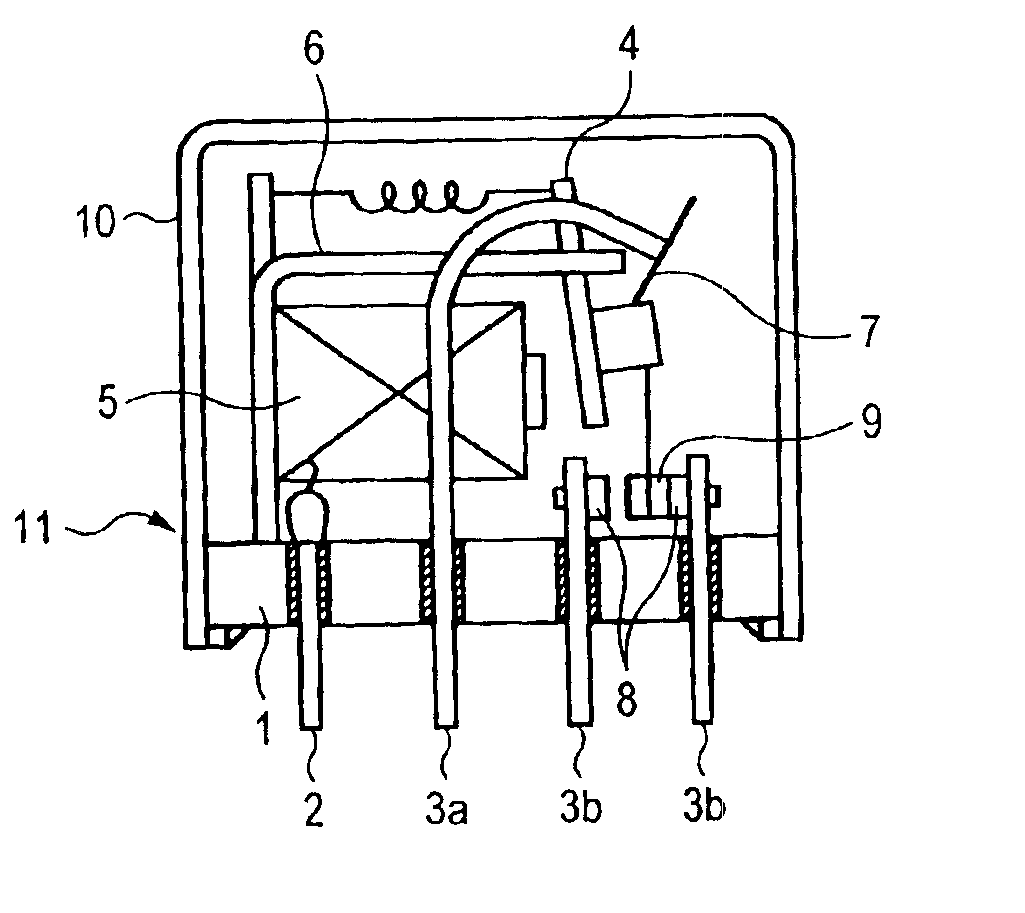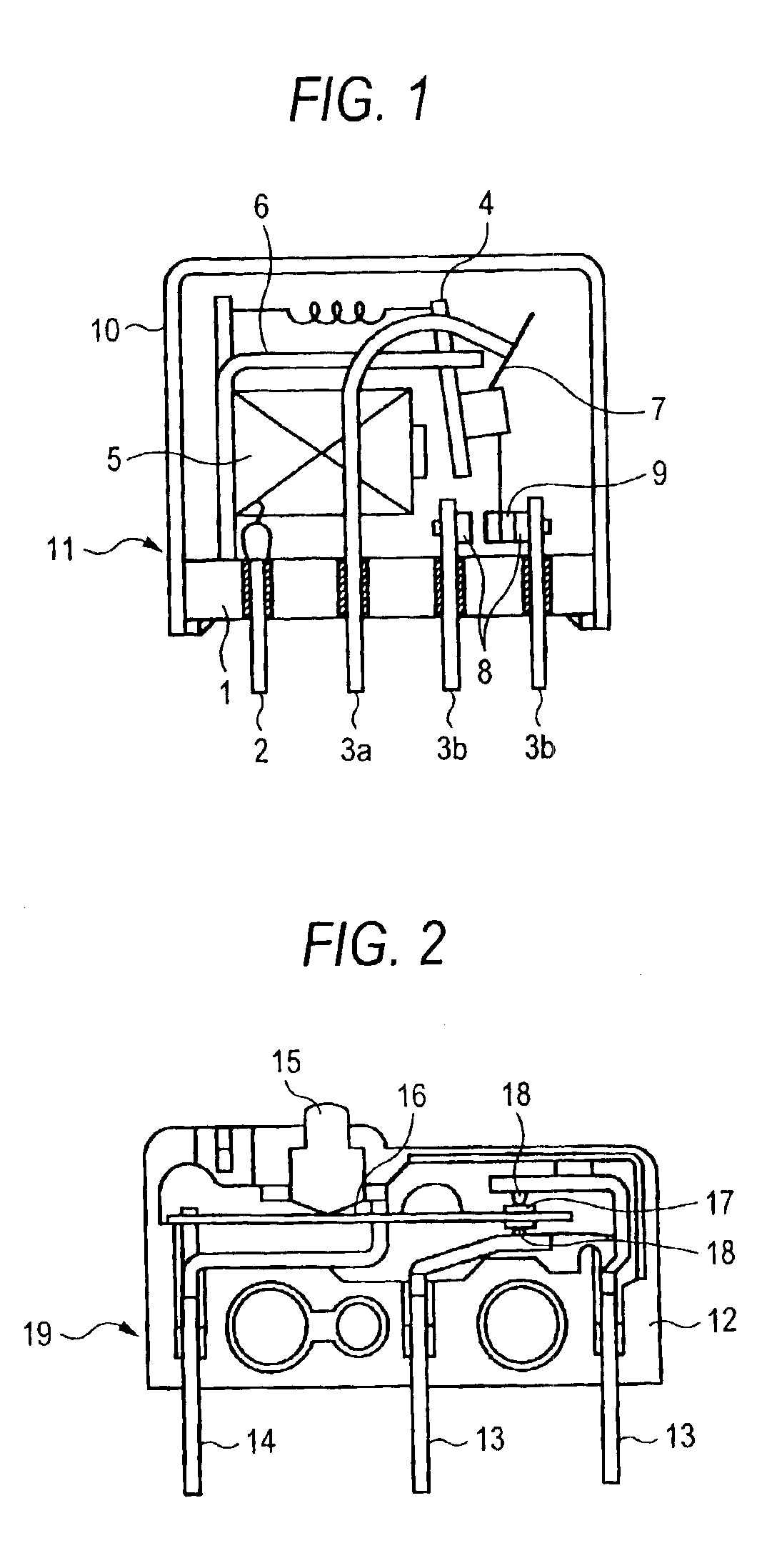Direct current load breaking contact point constitution and switching mechanism therewith
a technology of contact point and current load, which is applied in the direction of circuit-breaking switches, circuit-breaking switches for excess currents, contacts, etc., can solve the problems of cadmium-using relays and switches, abnormal arc continuation, and conduction defects due,
- Summary
- Abstract
- Description
- Claims
- Application Information
AI Technical Summary
Benefits of technology
Problems solved by technology
Method used
Image
Examples
embodiments 1 to 22
[0037](Embodiments 1 to 22)
[0038]Rivet contact points (movable contact point, stationary contact point) made of contact point materials described in the table are riveted to a movable contactor and a stationary contactor, respectively, and by assembling these components into a relay, a relay having the constitution shown in FIG. 1 is obtained. In the table, the contact point materials do not contain other metals and metal oxides than the metals and metal oxides described in the table.
[0039]The obtained relay is connected so that the polarity on the movable side may be the predetermined polarity, and is evaluated under the load conditions ① and ② later described. For details, 300,000 times of making and breaking are repeated of each of the relays, and for the direct current resistance load of ① ones that do not exhibit the locking due to the material transfer from one contact point to the other contact point, the welding between the contact points and the abnormal arc continuation ar...
PUM
| Property | Measurement | Unit |
|---|---|---|
| time | aaaaa | aaaaa |
| time | aaaaa | aaaaa |
| vapor pressure | aaaaa | aaaaa |
Abstract
Description
Claims
Application Information
 Login to View More
Login to View More - R&D
- Intellectual Property
- Life Sciences
- Materials
- Tech Scout
- Unparalleled Data Quality
- Higher Quality Content
- 60% Fewer Hallucinations
Browse by: Latest US Patents, China's latest patents, Technical Efficacy Thesaurus, Application Domain, Technology Topic, Popular Technical Reports.
© 2025 PatSnap. All rights reserved.Legal|Privacy policy|Modern Slavery Act Transparency Statement|Sitemap|About US| Contact US: help@patsnap.com


